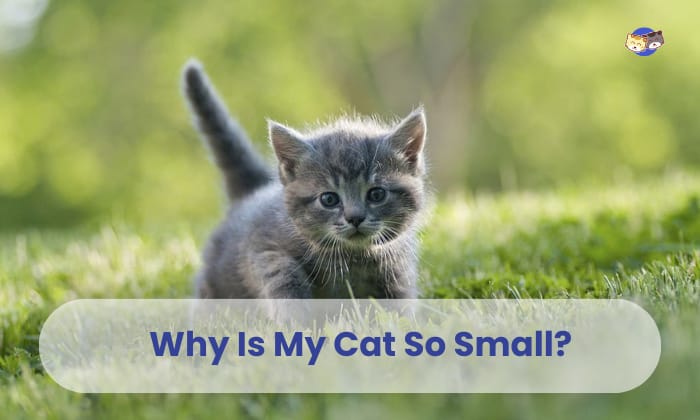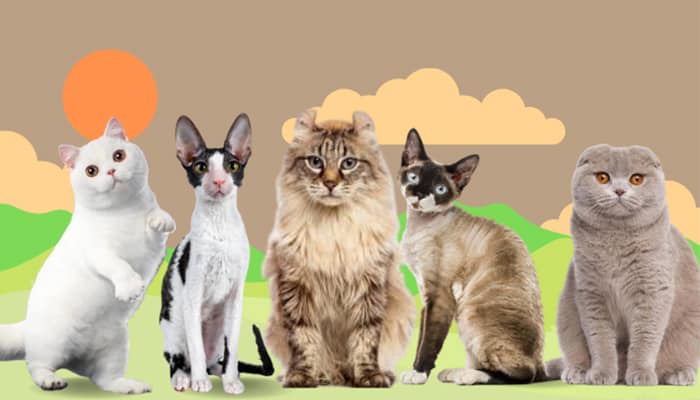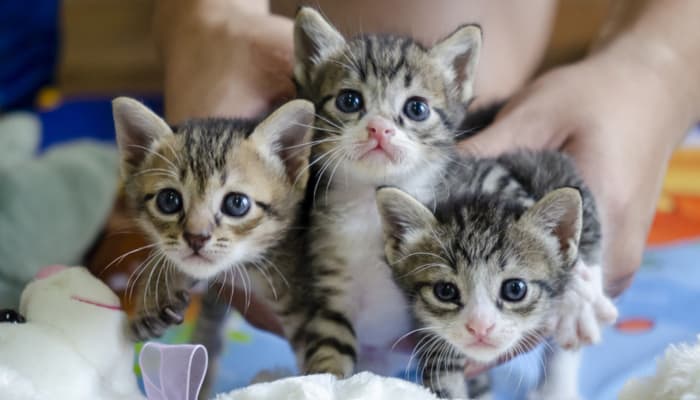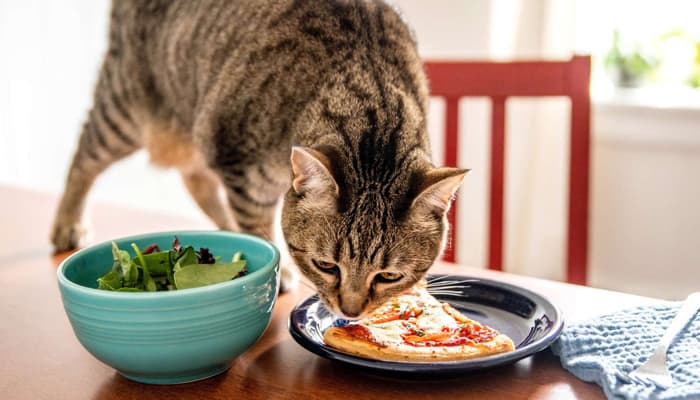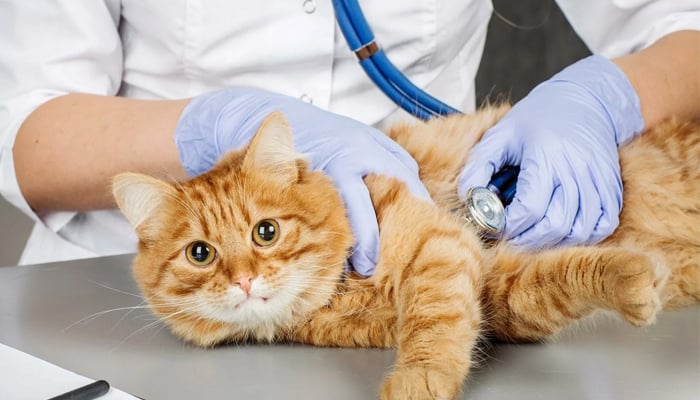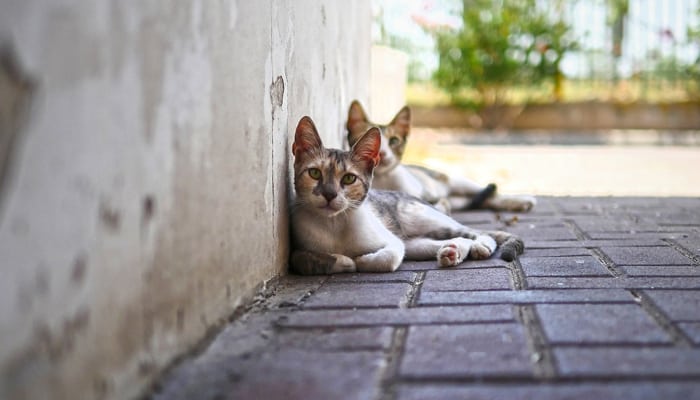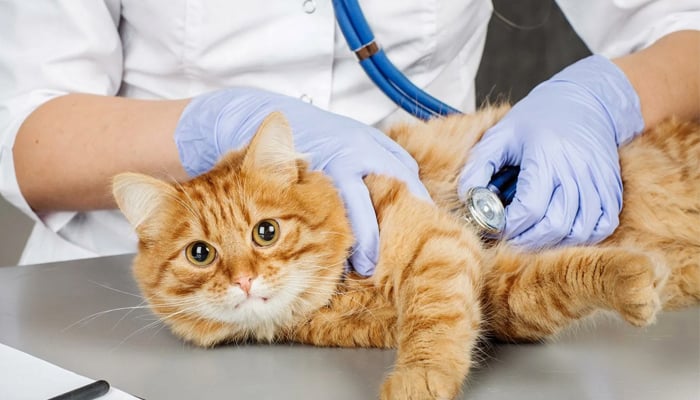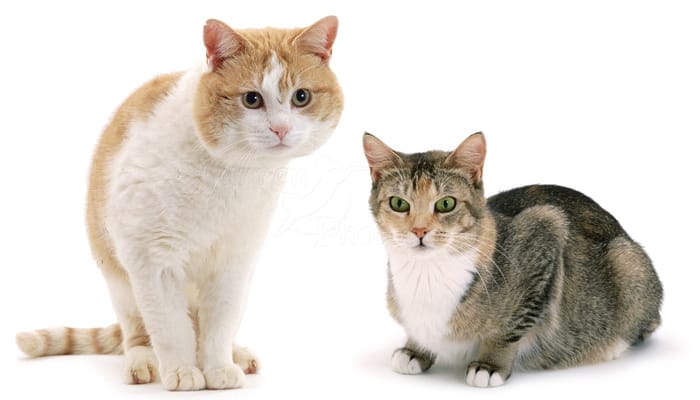If you’ve ever found yourself marveling, why my kitten so small, you’re not alone! Our feline pals, like humans, come in all shapes and sizes, and having a petite cat can be both endearing and puzzling!
Several factors can affect a cat’s size, including genetics, breed, or maybe even their health and diet!
Understanding the reasons behind your feline buddy’s small size can help you appreciate its unique characteristics and provide appropriate care for its well-being.
So, get ready to delve into the world of feline genetics, breed characteristics, health, and nutrition as we uncover the mystery of why is my cat so small!
Table of Contents
My Cat is Smaller Than Other Cats, Why?
In this section, we’ll delve in detail into the fascinating feline genetics, breeds, health, and diet to uncover the secrets behind your cat’s small stature.
1. It Could Be Your Feline’s Specific Breed!
Well, it turns out that just like humans, cats also come in different shapes and sizes. And one factor that plays a big role in a cat’s size is its breed! Some cat breeds are naturally smaller compared to other cats.
For example, have you heard of the Singapura breed? They’re known for being the smallest domestic cat breed, with an average weight of only 4-6 pounds. That’s like having a furry little ball of cuteness as your pet!
To give you an idea about which specific feline breeds small cats belong to, let us provide you with a quick view!
|
Cat Breed |
Weight Range (lbs) |
Height Range (in) |
Characteristics |
|
Singapura |
4 – 8 |
5 – 8 |
Smallest domestic cat breed, big eyes, playful temperament |
|
Munchkin |
5 – 9 |
6 – 8 |
Short legs, playful and affectionate |
|
Devon Rex |
5 – 10 |
9 – 11 |
Curly fur, big ears, social personality |
|
Cornish Rex |
6 – 10 |
10 – 12 |
Curly fur, active, playful, and affectionate |
|
American Curl |
6 – 10 |
8 – 10 |
Unique curled ears, affectionate and playful |
|
Scottish Fold |
6 – 13 |
8 – 11 |
Folded ears, round face, docile personality |
|
Siamese |
8 – 12 |
8 – 10 |
Distinctive coloring, talkative, intelligent |
|
Oriental Shorthair |
5 – 10 |
8 – 10 |
Pointed ears, slim build, active, curious |
|
Abyssinian |
7 – 10 |
8 – 10 |
Sleek, muscular build, active, and curious |
It’s important to note that not all cats within these breeds will fall within the weight and height ranges listed above, and some cats stay small even when they pass the growing periods.
Many factors can affect a cat’s size, so it’s important to speak with a veterinarian to ensure our dear cat friend is healthy and appropriate for their breed and age!
2. The Genetics Could Play a Role
If you’re having the feelings: “my tabby cat is so small” or “my cat still looks like a kitten” it could be because of its genetic makeup.
If its parents were smaller in size, your cat likely inherited those genes, resulting in a smaller size! Genetics can play a big role in determining their size!
For instance, a mother cat is small in size and has genes that code for a petite frame. If the father cat also has similar genes, there’s a high chance that their offspring will inherit those genes as well!
3. Your Feline Friend’s Health!
A cat’s early development is crucial for its growth and development. Health issues during this time, such as poor nutrition or illness, can significantly affect its growth and result in a smaller size.
Poor nutrition can cause a lack of essential nutrients, such as proteins, vitamins, and minerals, crucial for a cat’s growth and development. Without these nutrients, a cat’s growth can be stunted, resulting in a smaller size than expected.
For example, if a kitten doesn’t receive enough protein during its growth stage, it may have weaker bones and muscles, leading to a smaller size and weaker physical abilities.
But with the right care and attention, you can ensure your cat achieves its full potential and healty size.
4. Age Also Matters!
Age plays a significant role in a cat’s size. If you’re having worries like “my cat is small for her age,” it’s possible that it may simply be in the process of growing and may reach a larger size as it matures.
Here is an overview of a cat’s life stage by months, along with the typical sizes for each stage:
|
Life Stage |
Age in Months |
Size |
|
Neonatal |
0-4 |
3.5-5.3 inches, 3.5-5.3 ounces |
|
Transitional |
2-4 |
4-6 inches, 8-14 ounces |
|
Socialization |
2-7 |
6-10 inches, 1-4 pounds |
|
Juvenile |
7-12 |
8-10 inches, 3-6 pounds |
|
Adolescent |
6-18 |
9-12 inches, 5-9 pounds |
|
Young Adult |
6-18 |
9-12 inches, 5-9 pounds |
|
Adult |
1+ year |
9-10 inches, 5-10 pounds (depending on breed) |
|
Senior |
7+ years |
9-10 inches, 4-8 pounds (depending on breed) |
At 6 months, cats are typically in the latter half of their juvenile stage and are starting to reach their adult size, while at 8 months and 9 months, cats enter their adolescent stage and may experience a surge of energy and changes in behavior.
Cats generally reach their full size and weight by around after a year up to at 2 years of age, and factors such as breed, genetics, and overall health can still play a role in determining their size.
Appropriate care and attention throughout each life stage are important for a cat’s overall health and happiness. And try not to worry too much if your little fur ball seems petite right now—they may have some growing left to do!
5. The Environment and Diet Are Also Factors
Did you know that the environment in which your cat lives can also impact why it could be small and skinny? The diet and exercise level of your furry friend are important factors that can affect its growth.
If your cat has limited access to food or lack opportunities for physical activity, it may not reach its full potential size.
So, make sure your cat has a balanced and nutritious diet and plenty of opportunities for playtime and exercise. This will help your feline friend grow to its full potential size and lead a healthy and happy life.
6. Other Factors
Having doubts like, my cat is still smal, or my cat is so small at 1 year, are indeed understandable. There are also other factors that can cause a cat not growing enough.
Things like hormonal imbalances, stress, and certain medical conditions can play a role too. These factors can affect your cat’s growth and development, resulting in a smaller size.
If you’re concerned about your tiny furball, talking to your vet is always a good idea. They can help you determine whether there’s an underlying medical condition that’s impacting their growth.
My Cat is Smaller Than Normal: What Does It Mean?
If your tiny furry friend is smaller than what is considered normal for their breed or age, it could be due to genetics, poor nutrition, health issues, or stress. And as responsible fur parents, it is essential to keep our tiny fur babies in check!
A veterinarian can help determine if there are any underlying health issues contributing to their smaller size and provide guidance on how to help them reach their full potential.
1. Is It Normal, Why Is My Cat So Small?
It’s not uncommon for cats to be smaller than what is considered normal for their breed or age. Several factors, such as genetics, nutrition, health, and stress, can all influence a cat’s size. So, if you have a petite cat, there’s no need to worry!
2. Tips To Ensure Your Cat Has A Proper Growth Cycle
To improve your kitten’s stunted growth or avoid stunted growth in cats, and ensure their proper growth cycle, here are some little tips:
- A balanced and nutritious diet
- Freshwater
- Regular veterinary check-ups and vaccinations
- Exercise and playtime
- A stress-free environment with plenty of socialization
- Consider spaying or neutering
It’s important to consult with your veterinarian for personalized advice on your cat’s specific needs.
Frequently Asked Questions
Do any cats stay small?
Yes, some cat breeds are even known to have small adult cats, such as the Singapura, Munchkin, and Devon Rex.
These breeds are generally smaller than other breeds even when fully grown, with the Singapura being the smallest recognized breed by most cat associations!
How do I know if my cat is too small?
If you’re worried your cat might be too small, or specifically, an adult cat is so small; there are a few things you can do to check:
- Weigh them and compare them to what’s average for their breed and age.
- Make sure you can feel their ribs without excess fat and compare their size to other cats of the same breed and age.
- You may consult your feline pal’s vet for personalized advice.
What is the ideal weight and height for a cat?
A cat’s ideal weight and height can vary depending on the breed and gender. However, on average, a healthy adult cat typically weighs between 7 and 12 pounds (3 to 5.4 kg) and stands about 9 to 10 inches (23 to 25 cm) tall at the shoulder.
So, why my female cat is so smal? Why my male cat so small? FIY, this can vary based on the cat’s breed and gender.
Conclusion
To end today’s lesson, having a small cat can be a unique and endearing characteristic that makes your feline friend stand out from the crowd!
Truly, there are several factors that can contribute to a cat’s small size! And knowing what is considered a small cat, the things that can impact their size, and most especially, with proper guidance from their vets, can give you an idea if your furball is growing well.
Thank you for joining us in this short journey about the small wonders of “why is my cat so small!”
Read more: How to fatten up a cat?

I am Amy Sawy, a Doctor of Veterinary Medicine (DVM) graduate from the University of Kansas. y husband, Dr. Plummer, and I own a veterinary clinic in Phillipsburg, Kansas. In addition to my professional background, I am a devoted pet owner myself, with a household that includes dogs, rodents, and most notably, cats – a total of five felines in my home.
In 2020, I joined an organization as a professional writer, leveraging my experience and collaborating with my team to deliver the most valuable information for your cat’s care.


